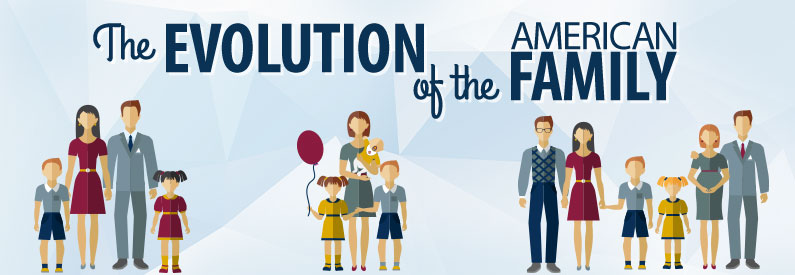By, Abdulla, Mohammed, Abdul Aziz, Marlyn, Claire, Maricarmen, Alexis & Benjamin
Throughout different cultures, gender has been taught and learned through different forms and mediums. Social and development theories argue that media and interpersonal relationships play a role in our ideas about what is normal in society. With media such as TV, Netflix shows, and films our exposure to gender norms and media representations lead us to understand our own gender. We receive a variety of interpretations depicting different relationships, especially many forms of parent dynamics and duos.
Traditional family roles in our society are perceived as being heteronormative. Most families are based on the idea of there being one man and one woman. As times have changed, so have the roles of parents. The traditional family is no longer just one man as a breadwinner and one woman as a caretaker, and society’s ideas of those roles should shift as well.
Men and women should be seen as equals when it comes to the different capabilities and qualities they need to possess as parents, especially when it comes to households that are not heteronormative.
Traditional Representations
There has been a subsequent culture of heteronormativity and a narrow view of how genders should behave and interact in relationships. Whether on TV or on billboards, heterosexual relationships make up a large portion of the gender relations we have been exposed to. Children exposed to these images are prone to think that this is the norm and that anything outside of this is what we know as queer. With exposure to media that only displays heteronormative relationships, children understand that whether they feel like their gender behavior and identity is different from the norm, they must conform because this is ‘normal’. This leads them to believe that anything outside these norms is wrong.
There is an evident lack of diversity, representation of LGBTQ+ couples and different parenting dynamics across several mediums. TV shows, cartoons, and books all display heterosexual or opposite-sex relationships and are the media children are exposed to and mimic in their day to day lives. The topic of incorporating same-sex and queer relationships in children’s media is a controversial and sensitive topic. Some parents are afraid of their children becoming gay because of exposure to homosexual relationships, and so they oppose diverse representations.
Consequences
What is this teaching our children? Is this allowing the topic of gender identity and self-expression to be locked behind closed doors? Without exposure to same-sex couples or different parent dynamics children who identify with and share those qualities are left in the dark, thinking that they are not normal. We want our children to be able to express themselves and grow up being exposed to the large spectrum of genders. As a society, we lack in representing and celebrating these identities.
Parents are who children look up to, and rely on for guidance in discovering themselves. There are several perspectives on how parents teach and handle gender in our society.
Celebration of All Families
The idea of households has changed over time. Several years ago, mothers used to take care of the house and raise the children, while fathers went to work to support the family. Now, it is common to see a lot of single-parent families that try to provide the best for their kids to make their life better. There is no doubt that there is a huge difference between a single-parent household and a nuclear family (with two-parents).

Single parent households will always have a negative stigma around them. Why is that? Could it be because of the nuclear social construct that people decided centuries ago is the norm? The unfortunate answer is yes. There are usually different scenarios that lead to a single-parent household: Divorce, one parent leaving, or even adoption. As a single parent, hardships surrounding the concept are very complex. For example, parents having to learn how to balance their social lives and the duties of caring for a child. While going to work, most single parents will drop their kid(s) off at a daycare or find a relative to watch over them. It takes a village to raise a child. Although single parents face different struggles, it is very possible for a child of a single parent to grow up with a good and advantageous life.
The New “Normal”
As families continue to evolve, it’s important that as a society we continue to adapt to these changes. Making sure that different dynamics are accounted for and represented is key to normalizing diverse family experiences, and embracing our differences.
References
“Breadwinner Moms, Caregiving Dads.” The New York Times, The New York Times, 16 Dec. 2013, www.nytimes.com/2013/12/16/opinion/breadwinner-moms-caregiving-dads.html.
Brown, Maressa, and Maressa Brown. “Single Moms vs. Single Dads: Examining the Double Standards of Single Parenthood.” Parents, 25 Nov. 2019, www.parents.com/parenting/dynamics/single-parenting/single-moms-vs-single-dads-a-look-at-the-double-standards-of-single-parenthood-how-we-can-do-better/.
Italie, Leanne. “LGBTQ Representation in Children’s TV Is Growing: ‘We’re Talking about the Love of a Family’.” USA Today, Gannett Satellite Information Network, 31 July 2019, www.usatoday.com/story/life/parenting/2019/07/31/ltbtq-representation-growing-childrens-television/1875892001/.
Jeffreys, Branwen. “Do Children in Two-Parent Families Do Better?” BBC News, BBC, 5 Feb. 2019, www.bbc.com/news/education-47057787.
Poole, John. “Animated History: The Evolution Of Parenting.” NPR, NPR, 22 June 2018, www.npr.org/sections/goatsandsoda/2018/06/22/621857925/animated-history-the-evolution-of-parenting.
“When It Comes to Child Well-Being, Is One Parent the Same as Two?” Institute for Family Studies, ifstudies.org/blog/when-it-comes-to-child-well-being-is-one-parent-the-same-as-two

